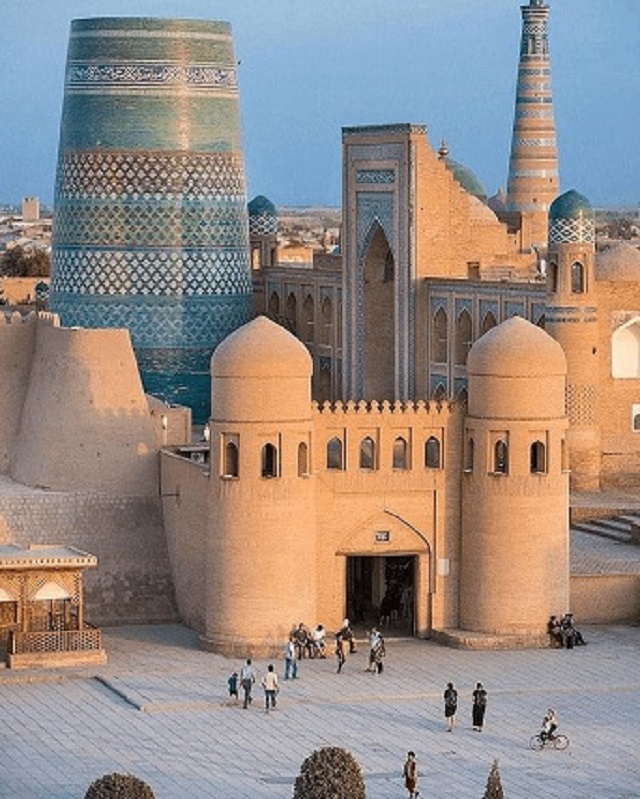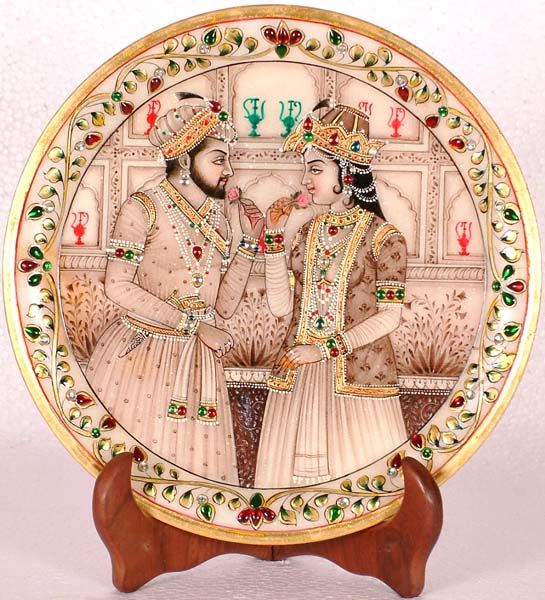The biography of Shah Jahan tells the story of one of India’s most powerful and influential Mughal emperors. Born as Prince Khurram in 1592, he ascended to the throne in 1628 after a long and tumultuous struggle for power. During his reign, he expanded the Mughal Empire to its greatest extent. His love for architecture resulted in his creation of some of the most stunning structures in India and Pakistan.
The Taj Mahal is one of the seven wonders of the world. Interestingly, the king himself was the one who commissioned its construction, although he did not physically build it.
The King Family:
His full name was Al-Hajrath Abul-Muzaffar Shahabuddin Muhammad Shah Jahan. He was born on January 5th, 1592, in Lahore, Pakistan. Khusrau Mirza, the son of Jahangir and Jagat Gosain, had a sister named Jahanara Begum.
The emperor of Shah Jahan Childhood:
He was born on January 5, 1592, to Jahangir and his second wife, Jagat Gosaini (a Rajput princess). After he was named “Qurram” (meaning a happy person), his grandfather, the emperor Akbar, took him away from his mother. The empire of Rukiah was handed over to Sultan Begum. The young Qurram loved Akbar and his pet’s mother more than his biological parents. Rukiah Sultan Begum raised him with love and attention, making her a significant priority.
Jahangir once prominently said that Qurram had received more love from Rukia Sultan Begum than from him or his wife. His trainers taught him martial arts and cultural arts, including music and poetry, and he received a traditional royal education in cultural arts. Akbar taught him different techniques of war leadership, and his pet’s mother emphasized the importance of moral values.
In 1605, after the death of Akbar, the 13-year-old Qurram returned to his biological parents. Now, let’s look at the exciting engagement of the young Qurram, much like the childhood of Emperor Shah Jahan.
Engagement with Mumtaz:
According to the biography of Shah Jahan, an astrologer foretold that the Mughal emperor and Mumtaz Mahal could not wed before 1612, or else their marriage would be ill-fated. Honoring the astrologer’s prediction, he decided to delay his marriage to Mumtaz until 1612. As a result, the couple had to wait an additional five years before they could finally wed.
Shah Jahan With Personal Life:
After having two children from his first two wives, Akbarabadi Mahal and Muthi Begum, Qurram married another princess before marrying Mumtaz in 1612. With Mumtaz, he had his first child, a daughter. However, the previous marriage was arranged for political reasons, and for the same reasons, people considered the wives as royal but not as beloved as Mumtaz.
Let’s know the Shah Jahan Mughal empire History throne:
The exhibition of military victories and potential heirs determined the succession of the throne in the Mughal Empire. However, the history of the Mughal emperor, Shah Jahan, deviated from the traditional primary method of choosing the rightful successor.
In 1614, he had the opportunity to showcase his military prowess when he aimed to conquer the kingdom of Maharana Amar Singh II. He demanded that the Rajput king hand over his kingdom to the Mughals. Shah Jahan led over 200,000 soldiers and defeated the Rajput army. His brave action opened doors for more opportunities. Three years later, in 1617, he aimed to expand the empire by conquering the Deccan Plateau.
After successfully achieving this, his father, Jahangir, conferred the title “Shah Jahan,” meaning “King of the World” in Persian. It made him the favorite son of the empire, and he grew closer to his father.
Mughal Empire History Throne:
Although Shah Jahan has proved his capabilities and prowess more than once, the fight for the throne is more complex than he thought. Nurjahan and her brother Asaf Khan made Jahangir an important court member after marrying him. Similarly, Shahzada Shahryar, Jahangir’s younger brother, married Nurjahan and Shah Jahan, his daughter from his first marriage. Shahzada Shahryar is better than Shah Jahan and continues to persuade her emperor to become after him.
Led to the help of the insurgent Shah Jahan Mahabat Khan with the use of a Mughal general, he led his army against his father and Nurjahan, but in 1623 he lost comprehensively. The emperor forgave him three years later, but he kept trying to put him on the throne. In 1627, after Jahangir’s death, Shah Jahan was crowned emperor because the entire army was in his possession. As soon as he became the emperor, he removed all his enemies to make sure there were no further competitors to the throne.
Shah Jahan killed many, including his brother Shazada Shahiar in 1628.
Shah Jahan killed many, including his brother Shazada Shahiar in 1628. His cousins, Tahmuras and Hoshang. Shah Jahan’s eliminated anyone he perceived as a threat to his throne, including his nephews Garshap and Dawar and the sons of Prince Daniel and Prince Khusro. His stepmother, who longed for Nurjahan, remained in jail under tight security. How did our king Shah Jahan Mughal, empire throne? It’s amazing, right? Let’s move to the Shah Jahan administration.
Shah Jahan Administration:
The biography of Shah Jahan depicts his unwavering efforts to expand his empire throughout his reign, which resulted in numerous struggles and alliances. He formed partnerships with certain Rajput kings, including those from Bundle Khand, Bulgaria, and Mewar, while fighting against others, such as the Bundela Rajputs. In 1632, he took control of the fort of Daulatabad and imprisoned Hussein Shah. Moreover, he appointed his son, Aurangzeb, as his viceroy, who later conquered territories like Golconda and Bijapur in South India, further expanding the Mughal Empire’s reach.
He then seized Kandahar, which led to the famous Mughal-Safavid war. His empire needed to extend to Ghazna beyond the Khyber Pass; he worked on the entire administration and expanded the kingdom. Now, let’s talk about his army.
Shah Jahan army:
Shah Jahan invested heavily in building a large army. In his biography, it’s mentioned that he commanded an army of over 911,400 soldiers, which included 185,000 horse riders. The king was also responsible for manufacturing a large number of cannons. During his 30-year rule, he turned his empire into a well-led military machine.
Now, let’s move on to talk about Shah Jahan’s architecture.
Contribution to the Mughal Architecture:
Shah Jahan’s biography encompasses his achievements as an empire-builder and his lasting impact as a renowned architect of beautiful structures in India and Pakistan. His empire drew visitors from far and wide who sought to study the diverse construction techniques utilized in his buildings. Perhaps his most celebrated creation is the Taj Mahal, widely believed to have been commissioned by Shah Jahan as a mausoleum for his beloved wife, Mumtaz Mahal. Today, the Taj Mahal is one of the Seven Wonders of the World, a testament to his architectural vision and legacy.
Construction of the Taj Mahal:
One of the most significant events in the Mughal Empire during the reign of Shah Jahan was the construction of the Taj Mahal. Mumtaz, his beloved wife, died due to postpartum bleeding while giving birth to their fourteenth child, which devastated the king. In memory of his wife, he decided to build the world’s most beautiful mausoleum.
After many years of planning, hard work, and immense sacrifice, the memorial known as the Taj Mahal was built. Today, people from different parts of the world visit India to see this wonderful white marvel, one of India’s most visited tourist destinations. The Taj Mahal continues to be one of the world’s seven wonders, a testament to Shah Jahan and Mumtaz’s enduring love and legacy.
Other structures that shah Jahan built:
He is also built moments in his rule.
Red fort & lad Qila(Delhi)
Sections of Agra castle
Jama Mosque(Delhi)

Moti Mosque of pearl Mosque(Lahore)
The Tomb of Jahangir
Takat-E-Thous
Shah Jahan Mosque (Tatta) visit more places: Journey Index.
Last Days:
In September 1658, Shah Jahan faced a serious challenge to his rule. While recovering from his illness, one of his sons, Dara Shikoh, took on the role of ruler. It angered his other sons, Shuja and Murad Baksh, who demanded their independent provinces. Meanwhile, Aurangzeb raised an army and defeated Dara Shikoh, killing the rest of his competitors and declaring himself emperor.
Although his eventually recovered from his illness, Aurangzeb captured him in the Agra Fort to declare him unfit to rule. He also put his sister, Jahanara Begum Sahib, under house arrest, accusing her of conspiring with their father. It is said that Shah Jahan spent eight long years in prison, gazing at the mausoleum he had built in memory of his beloved wife.
The Emperor Death:
He fell ill again in the first week of January 1666 and did not recover. On January 22, it is said that he summoned the Akbarabadi mahal and requested his daughter Jahanara Begum. He recited some lines from the holy Quran before breathing his last at 74. The emperor who once ruled India and most of India died as a prisoner.
Princess Jahanara Begum wanted a procession with the state nobility carrying her father’s body across Agra so that people could bid a final farewell to their beloved emperor. However, Aurangzeb was not in the mood for such a grand funeral.
Syed Muhammad Khanouji and Kazi Khurban moved Shah Jahan’s body from the jail coffin and transported it to the Taj Mahal through the river, where they placed him next to his beloved wife, Mumtaz. It is the information regarding the death of the king in his Biography.
Conclusion:
It is a biography of Shah Jahan, including his family, married children, administration, and army. The Taj Mahal, one of the world’s seven wonders, is particularly noteworthy. It is tragic that his son, one of the greatest kings in history, was his prisoner.
Shah Jahan is remembered for his kindness, military prowess, fighting spirit, and love for his wife, Mumtaz Mahal, with who he is buried. It marks the end of the Biography of Shah Jahan. For more articles visit 21Hashtags.
